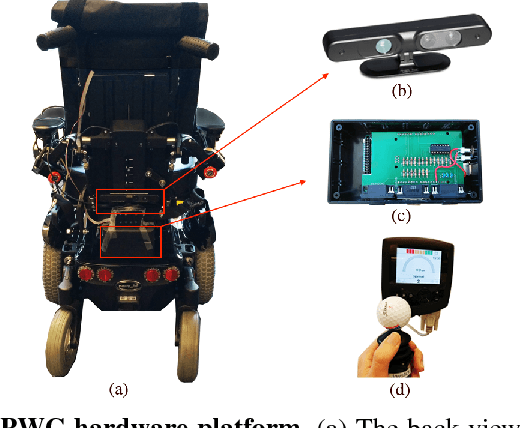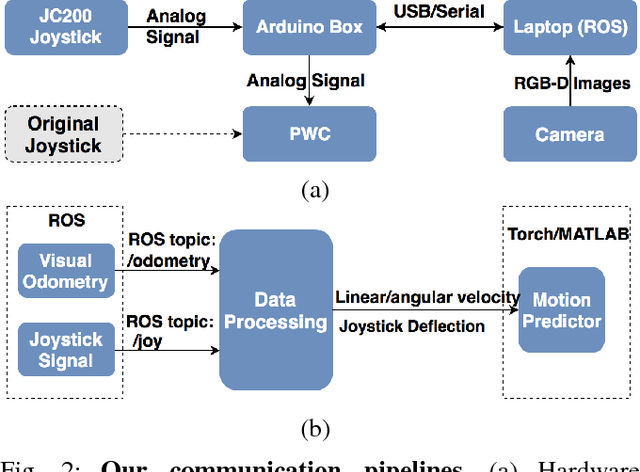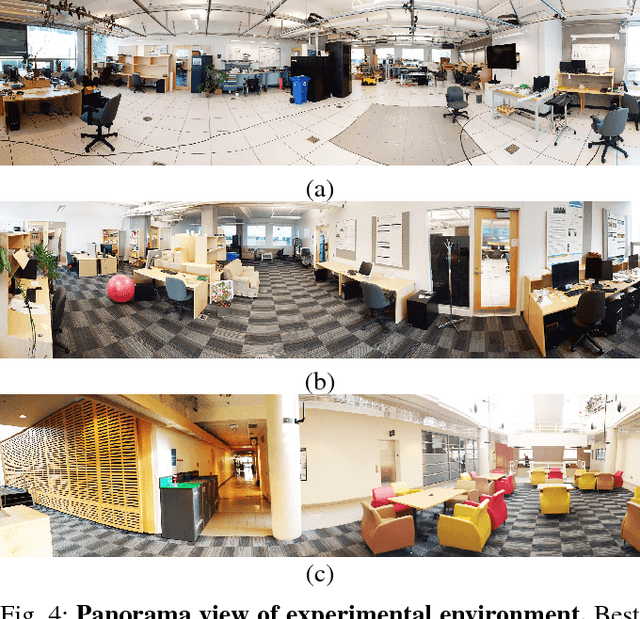Tian Qi Chen
Learning Motion Predictors for Smart Wheelchair using Autoregressive Sparse Gaussian Process
Jun 07, 2018



Abstract:Constructing a smart wheelchair on a commercially available powered wheelchair (PWC) platform avoids a host of seating, mechanical design and reliability issues but requires methods of predicting and controlling the motion of a device never intended for robotics. Analog joystick inputs are subject to black-box transformations which may produce intuitive and adaptable motion control for human operators, but complicate robotic control approaches; furthermore, installation of standard axle mounted odometers on a commercial PWC is difficult. In this work, we present an integrated hardware and software system for predicting the motion of a commercial PWC platform that does not require any physical or electronic modification of the chair beyond plugging into an industry standard auxiliary input port. This system uses an RGB-D camera and an Arduino interface board to capture motion data, including visual odometry and joystick signals, via ROS communication. Future motion is predicted using an autoregressive sparse Gaussian process model. We evaluate the proposed system on real-world short-term path prediction experiments. Experimental results demonstrate the system's efficacy when compared to a baseline neural network model.
Fast Patch-based Style Transfer of Arbitrary Style
Dec 13, 2016



Abstract:Artistic style transfer is an image synthesis problem where the content of an image is reproduced with the style of another. Recent works show that a visually appealing style transfer can be achieved by using the hidden activations of a pretrained convolutional neural network. However, existing methods either apply (i) an optimization procedure that works for any style image but is very expensive, or (ii) an efficient feedforward network that only allows a limited number of trained styles. In this work we propose a simpler optimization objective based on local matching that combines the content structure and style textures in a single layer of the pretrained network. We show that our objective has desirable properties such as a simpler optimization landscape, intuitive parameter tuning, and consistent frame-by-frame performance on video. Furthermore, we use 80,000 natural images and 80,000 paintings to train an inverse network that approximates the result of the optimization. This results in a procedure for artistic style transfer that is efficient but also allows arbitrary content and style images.
 Add to Chrome
Add to Chrome Add to Firefox
Add to Firefox Add to Edge
Add to Edge